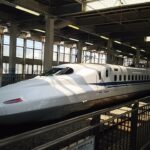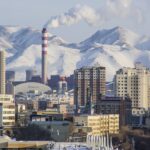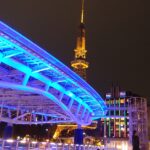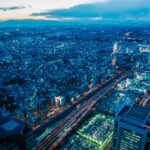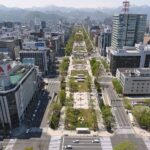There are many different ways to get around Kolkata thanks to its robust public transit system, which is available to both residents and tourists. This network connects many of the city’s top attractions, including the Victoria Memorial, Eden Gardens, and Howrah Station. Buses, trams, auto rickshaws, and ferries are some additional common forms of public transportation. In Kolkata, taxis can also be rented, however, they are typically more expensive than other modes of transportation.
Metro system in Kolkata: Basic information
The Indian state of West Bengal’s capital, Kolkata, is home to one of the country’s oldest and largest metro systems. In India, it was the country’s first underground metro system, and it opened for business in 1984. The Kolkata Metro Rail Corporation (KMRC) manages the metro system, which has six lines.
The lines of the Kolkata subway system
Line 1 (Blue): North-South Metro
From Dakshineswar to Kavi Subhash, 31.3 km, there are 26 working stations: 9 elevated, 2 at grade, and 15 subterranean. The line links Dakshineswar with New Garia with 1,676 mm train stock. Starting in October 1984, India’s first subterranean railway reached its full length by February 1995. Kolkata Metro was the first in the nation and wholly indigenous, hence its development was more trial-and-error than the Delhi Metro, which included many international specialists.
Line 2 (Green): East-West Metro
It connects Salt Lake to Sealdah and will bridge the Hooghly River to Howrah. An eastern expansion to Teghoria is also being proposed. It would feature 17 stations, 11 elevated and 6 underground, over a 22-km length from Teghoria (Haldiram) to Howrah Maidan. It would connect India’s two busiest commercial areas (BBD Bagh and Salt Lake Sector V) to its two busiest commuter and long-distance rail terminals (Howrah and Sealdah), attracting many passengers. The deepest metro shaft and largest underwater metro tunnel in India are on Line 2. Howrah will be India’s deepest metro station, at 33 meters.
Line 3 (Purple)
The 15-kilometer line’s 6.5 km section from Joka to Taratala was opened on December 30, 2022. The course extends 3.4 kilometers from Joka in the south to Diamond Park in the north, for a distance of 15 kilometers. It will join Kolkata Metro Line 1 at Park Street in the city’s center and travel concurrently up to Esplanade, where it will join Kolkata Metro Line 2 as well. Rail Vikas Nigam Limited is building Line 3.
Line 4 (Yellow): Noapara-Barasat Line
Connects Noapara to Barasat in North 24 Parganas. It will largely travel beneath ground viaducts. Up until Jessore Road Station, it will travel above ground before going underground to reach Barasat metro station. It will include an interface station with Kolkata Metro Line 6 at the NSCBI Airport. The line is planned to open in October 2023, running from Noapara to the airport.
Line 5 (Pink)
Runs from Baranagar to Barrackpore in North 24 Parganas. Its purpose is to make it easier for people to travel from the northern suburbs of Kolkata to Kolkata through North Kolkata.
Line 6 (Orange)
An under-construction rapid transit line would travel through the satellite cities of Salt Lake and New Town to connect New Garia with Netaji Subhas Chandra Bose International Airport. In 2023, the line between Kavi Subhash and Hemanta Mukhopadhyay is expected to open. This section of the metro will rank among the most significant because it will link Kolkata Airport to the southern and eastern portions of the city. This path will cover a total distance of 30 kilometers. The East-West Metro’s speed testing during the CRS inspection in 2019 was conducted at a speed of 80 km/h (50 mph).
Map of Kolkata Metro 2023 – Free Download in PDF
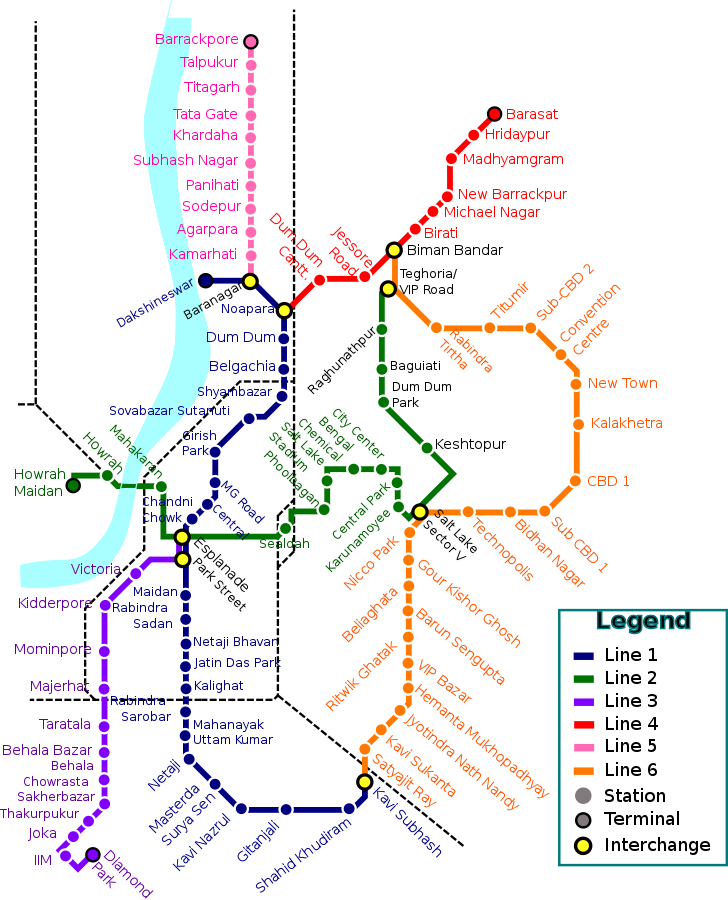
Click and download the map of Kolkata’s underground system for 2023
The Kolkata Metro Map 2023 is a crucial resource for anyone trying to get around the city. Anyone can quickly take a detailed look at the Metro’s stations and routes thanks to this free PDF download. It is also a very useful tool for those who are organizing their vacation because it will enable them to determine the precise duration and expense of their trip. Additionally, it offers useful details about links to other public transportation systems and other attractions. Anyone may explore the city’s magnificent sights and noises while also making use of the Kolkota Metro’s ease.
Public transport tickets in Kolkata: the Best types for travelers & actual prices
One of the biggest cities on earth is Kolkata, the capital of India’s West Bengal region. Visitors to Kolkata can discover a wide range of ticket options for public transit to meet their needs.
Prepaid cards are the most popular form of public transit ticket in Kolkata. Given that it may be used for several trips, this is a practical method of paying for rides. The cost of the cards depends on how many trips are made, and they may be purchased at bus stops, metro stations, and other places.
The single travel ticket is an additional option for public transportation tickets. These are perfect for people who only intend to take one trip because they are only good for that one ride. Tickets for a single travel can be purchased at any bus or metro stop.
The ideal choice is the monthly pass for individuals who intend to make many excursions. This pass, which can be purchased at any metro station or bus stop, enables visitors to make an unlimited number of city excursions. The cost of the pass is based on how many trips are made.
Finally, a tourist permit is an additional option for customers. Travelers can make as many journeys inside the city as they like with this three-day permit. The pass is slightly more expensive than the monthly pass, but it is more cost-effective for those who intend to make several journeys while they are there.
Travelers should anticipate paying significantly less for public transit in Kolkata than in other large cities, regardless of the type of ticket. The tourist pass is the perfect choice for visitors to Kolkata who will be staying there for three days because it will allow them to go about the city as often as they like for a fair fee.
Timetables & Schedules of Kolkata Metro System
The metro system in Kolkata provides a quick and practical way to get around the city. On Monday through Saturday, the system is open from 7:00 a.m. to 10:00 p.m.; on Sundays and public holidays, it is open from 8:00 am to 10:00 p.m. At the terminal station, the first train leaves at 7:00 a.m., and the final train leaves at 10:00 p.m. During peak hours, services are typically provided every 10 minutes, and during off-peak hours, services are provided every 15 to 20 minutes. On a few routes, the metro additionally provides extra early morning and late night services.
What Are Other Options For Public Transportation In Kolkata?
Other than the metro, Kolkata, India, provides a wide range of public transportation choices. These consist of ferries, buses, trams, autorickshaws, taxis, and cycle rickshaws. In Kolkata, buses are the most widely used and least expensive kind of public transit. There are also trams, which move more slowly along the streets than buses. For quick excursions, auto-rickshaws are a viable choice, while taxis are available for those who prefer a more luxurious ride. For short distances, cycle rickshaws are a cost-effective choice, and ferries can be used to cross the Hooghly River. All of these choices give folks a practical means to get around Kolkata.
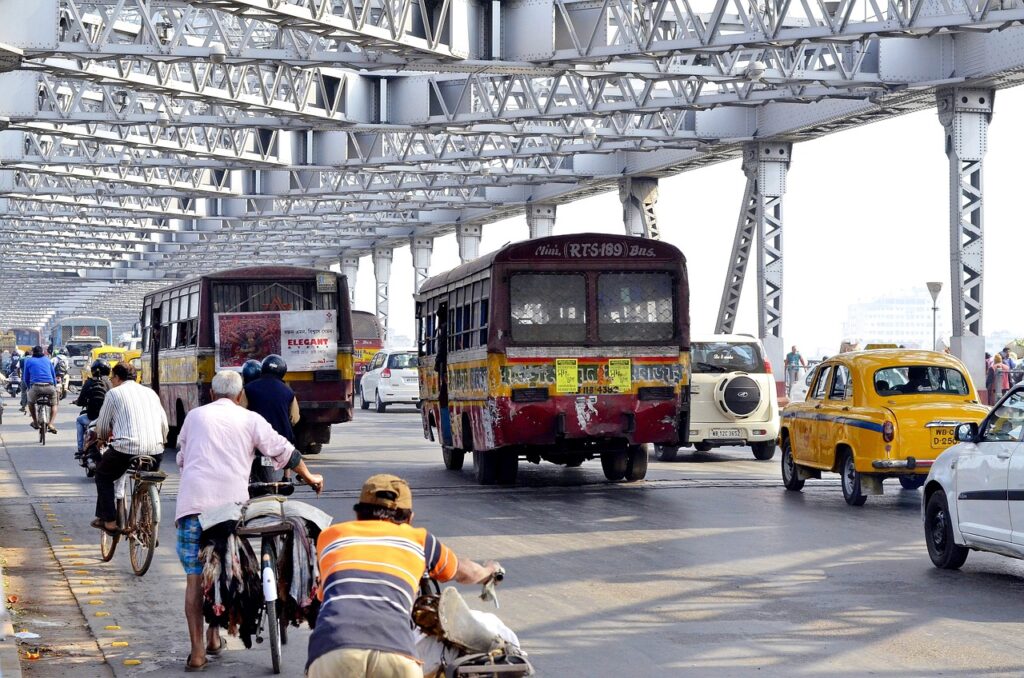
public bus in Kolkata
The entire city of Kolkata is served by an extensive network of public buses. The West Bengal Transport Corporation (WBSTC) operates these buses, and the Kolkata Metropolitan Development Authority (KMDA) is in charge of their management. The city bus network, which serves the city, and the suburban bus network, which links the city to its suburbs, are the two divisions of the public bus system.
Buses are the most commonly used form of public transportation in the city’s bus network. The blue-and-white bus routes that travel from the city center to the suburbs are the most well-liked ones. These buses are inexpensive and dependable, but they are frequently crowded. The red-and-white buses provide the express services that go from the suburbs to the city center. Although they cost more, these buses travel more quickly.
The majority of people who use the suburban bus system are commuters going to and from the suburbs. These vehicles are often more luxurious and have more room than city buses. Additionally, they cost more than city buses. The green-and-white bus routes that travel from the suburbs to the city center are the most well-liked ones.
In Kolkata, the public bus system is comparatively efficient and safe. All buses have air conditioning and an electronic ticketing system that streamlines the ticketing and trip-tracking processes. The WBSTC Red-and-White buses (21, 22, 23, 24, 25, 26, 27, 28, 29, 30, 31, 32, 33, 34, 35, 36, 37, 38, 39, 40) and the WBSTC Green-and-White buses (41, 42, 43, 44, 45, 46, 47, 48, 49, 50, 51, 52, 53, 54, 55, 56, 57, 58, 59, 60) are the most well-known bus numbers in the city.
Public TRAINS in Kolkata
India’s Kolkata is renowned for having a thriving public transportation system. Travelers can benefit from the dependable network of public trains, which offers quick and reasonably priced transportation across the city and its environs. There is a sizable public train network in Kolkata. The Eastern and South-Eastern Zones make up the two sections of the public train system. The Kolkata Suburban Railway and the Circular Railway provide service to both zones. The city’s most well-known public train system, the Kolkata Suburban Railway, has more than 400 kilometers of lines connecting more than 500 stops. The Circular Railway, in contrast, has a smaller network with only 22 stops and 39 kilometers of tracks.
The Kolkata Metro Rail Corporation (KMRC) and Indian Railways jointly run Kolkata’s public train system. All throughout the day, trains run frequently, with peak hours seeing an increase in train frequency. The six different ticket classes that the Kolkata Suburban Railway offers are first class, second class, suburban first class, ladies first class, ladies second class, and general class. Delhi, Chennai, Mumbai, Bengalore, and Hyderabad are the nearest cities from which Kolkata has the most significant train connections. With a trip taking just 18 hours, the Delhi-Kolkata Rajdhani Express is the quickest train service between the two cities. Another well-liked train route is the Mumbai-Kolkata Superfast Express, and the Chennai-Kolkata Mail is a well-liked overnight train.
Kolkata offers a variety of local trains that connect the city to adjacent towns and villages in addition to long-distance train connections. For many locals, these trains are their only source of transportation, offering a dependable and convenient way to move around.
How to Get From Netaji Subhas Chandra Bose International Airport (CCU) To The City Center With Public Transport?
The Airport Shuttle Bus Service is the most practical method of getting from the airport to the city core. The least complicated way to go to your location is to use this service, which is available frequently. Every hour, a shuttle bus leaves the airport and makes stops throughout the city center, making it simple to travel to your selected location.
The Metro is an additional mode of public transit. From the airport to the city center, Kolkata may be reached using the Metro, which is a fantastic transportation option. The metro is a quick and inexpensive means of transportation that connects the airport to several locations throughout the city.
Finally, you can go from the airport to the city center by bus or autorickshaw. At the airport, you may find buses and autorickshaws that will take you where you need to go. Buses and auto rickshaws are also reasonably priced options, however,, they may take longer to get you where you’re going owing to traffic.
There are numerous public transit options available to get to the Netaji Subhas Chandra Bose International Airport (Kolkata Airport). The bus, cab, subway, auto-rickshaw, and airport shuttle bus are all excellent ways to reach your location. Before selecting a method of transportation, it is vital to think about which option is ideal for you because each has advantages and disadvantages of its own.
how to spend 3 days in Kolkata?
You’ll want to maximize your time in Kolkata if this is your first visit. Three days are the ideal length of time to discover all that this dynamic city has to offer, including its fascinating culture, delectable cuisine, and lively nightlife. This three-day itinerary will give you a genuinely unique opportunity to discover Kolkata.
Day 1: Cultural Investigation
Visit Kolkata’s entrance, the renowned Howrah Bridge, first thing in the morning. Explore the adjacent streets and take in the lively environment after you’ve taken in the breathtaking vista. Numerous street food vendors serving mouthwatering regional specialties may also be found among the many souvenir shops selling traditional handicrafts and souvenirs.
Visit the Victoria Memorial, a magnificent structure that honors British sovereignty in India, in the afternoon. Then, go to the adjacent Indian Museum to find out more about the history and culture of the area. Visit the Hindu shrine Dakshineswar Kali shrine later, which is renowned for its stunning architecture and exquisite beauty.
Try one of the city’s many hidden restaurants for dinner so you may sample real Bengali food.
Day Two: Regional Food
Visit Rabindranath Tagore’s ancestral house at Jorasanko Thakur Bari first thing in the morning. The literature and culture of Bengal are well-taught in this location. After that, wander through Mullick Ghat’s bustling flower market.
Visit a nearby eatery, like 6 Ballygunge Place, for lunch so you may try some authentic Bengali cuisine. Then go for a stroll through Chinatown’s busy streets to learn more about the city’s varied culinary culture.
Take a boat trip along the Ganges River in the evening to view the city’s renowned ghats (riverbanks). You can then savor a delectable dinner at one of the best restaurants in the area, such Oh! Calcutta or Bhojohori Manna.
Third day: nightlife
Visit the famous Marble Palace first thing in the morning. This 18th-century house is a terrific site to explore and snap pictures. Then, go around the crowded New Market district where you may purchase for regional crafts and mementos.
Go to Park Street in the afternoon, which is well-known for having a thriving nightlife. Explore the numerous clubs and pubs in the area to take advantage of the live music, delectable cuisine, and, of course, a few drinks.
Last but not least, spend some time at the famous Prinsep Ghat, a riverbank promenade with some of the best views of the city skyline.
What other metro systems are nearby to Kolkata?
A number of significant metropolises, each with its metro system, surround Kolkata. These include the Lucknow Metro, the Mumbai Metro, the Hyderabad Metro, the Bengaluru Metro, the Chennai Metro, and the second-largest metro system in the world, the Delhi Metro. For commuters in the area, each of these metro systems provides easy-to-use transportation options that make it simple to navigate throughout Kolkata and the places nearby.
CHECK OUT THE AMAZING PUBLIC TRANSPORTATION VIDEO GUIDE IN KOLKATA
Summary of our tour guide for Kolkata
I’ve had the good fortune to live in Kolkata for the past five years, so I’ve personally seen how convenient the city’s public transportation system is. The public transportation system in Kolkata is broad and effective, offering a range of buses, trams, and metro lines in addition to the iconic yellow taxis. The metro’s punctuality and cleanliness have pleased me during my own repeated use of it. The buses are generally reliable and offer a convenient means to get around the city, even though they can get crowded during rush hours. The trams offer a distinctive experience as they meander through Kolkata’s busy streets and are a terrific way to move around as well. In summary, both locals and tourists greatly benefit from Kolkata’s public transit system.
Top 5 FAQs and answers about Kolkata public transport?
What are the primary public transportation options in Kolkata?
- The public transportation network in Kolkata is made up of buses, trams, taxis, and auto-rickshaws. The West Bengal State Transport Corporation (WBSTC) manages the bus network, which is the most popular form of transportation. Another well-liked option is the tram, which is run by the Calcutta Tramways Company. You can rent taxis and auto-rickshaws as well.
How much are the tickets?
- The cost of bus and tram tickets varies based on the route. Tickets typically cost between 5 and 10 rupees. Typically, a flat payment based on the distance traveled is what taxis and autorickshaws charge.
When is the ideal time of year to travel?
- The non-peak hours in Kolkata, often between 10 a.m. and 4 p.m., are the greatest times to travel. The roads can become highly crowded during rush hours, making it difficult to get where you’re going quickly.
Are there any unique services offered?
- Yes, Kolkata does provide a few unique services. Kolkata Metro Rail operates a commuter rail network, and Indian Railways also runs long-distance trains. Ferries and launches are a couple of the various water transportation choices.
Are there any specials for using public transportation?
- Yes, a few reductions are offered. Discounts on tickets are available for seniors, students, and those with disabilities. Additionally, there are reduced rates for some routes, including the Kolkata Metro Rail.
Useful links

